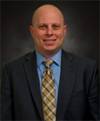 Wireless communications industry veteran Justin Panzer brings his insights to this edition of the Tek Talk blog. He has more than 19 years of industry experience, including 10 years in test and measurement working on everything from commercial handset testing to mil/gov RF. He is currently business development director for the Sources & Analyzers Product Line at Tektronix. He holds a Bachelor of Science from Drexel University and an MBA from Auburn University. He takes over the blog from Gina this period.
Wireless communications industry veteran Justin Panzer brings his insights to this edition of the Tek Talk blog. He has more than 19 years of industry experience, including 10 years in test and measurement working on everything from commercial handset testing to mil/gov RF. He is currently business development director for the Sources & Analyzers Product Line at Tektronix. He holds a Bachelor of Science from Drexel University and an MBA from Auburn University. He takes over the blog from Gina this period.
Ubiquity of wireless communications is adding an RF component to electronics designs that haven’t historically been wireless enabled. More complex chip, board and embedded systems designs that incorporate communications technologies into everything from PCs to automobiles are changing the impact of RF on the world's R&D engineers. Designers today need the tools to get the most out of unfamiliar technologies.
Ubiquity of wireless communications is adding an RF component to electronics designs that haven’t historically been wireless enabled. More complex chip, board and embedded systems designs that incorporate communications technologies into everything from PCs to automobiles are changing the impact of RF on the world's R&D engineers. Designers today need the tools to get the most out of unfamiliar technologies.
To keep pace, the test and measurement landscape is evolving. One notable change is the blurring of lines between time and frequency domain disciplines. No longer can we refer to time and frequency or "digital" and "RF" separately. The two areas are so intertwined in embedded systems today that engineers now require a view of both. Whether this is in the form of EMI diagnostics or more complex modulation/de-modulation analysis of signals, the overall complexity of testing has grown as more parameters need to be evaluated.
Advances in spectrum/signal analyzers and oscilloscopes now give users who are straddling that blurry line a number of choices. For instance, modern digital oscilloscopes often include optional vector signal analysis (VSA) capability. In such cases, the signal processing path is similar to that of a traditional VSA with slight variations depending on the hardware being used.
But the question will invariably arise "is a scope an adequate solution for my frequency measurement needs" or vice versa. Understanding the limitations of one instrument versus the other and the resulting measurement variability is critical in determining the correct solution.
For those of us in the test and measurement industry, our role as an application and solution partner is to provide the necessary insight into these dimensions as well as to create software and tools to improve usability and to help engineers accurately interpret results. Moreover, we must understand the engineer’s use model within the new landscape.
Ownership and familiarity with existing instrumentation in a lab is an important consideration as well. If engineers have instruments they are comfortable using, asking them to invest in and learn something new may be difficult. Instead, a less costly and more acceptable solution may be to provide software to improve stability of frequency measurements with a scope or to maximize repeatability on a spectrum analyzer. This software may be available on the instrument itself or offline, but the result is improved performance and a testing procedure that fits with the user's expertise. Of course advances in hardware are important to drive more powerful and complex designs, but a focus on applications is paramount.
In the end, what this comes down to is similar to many test and measurement discussions–cost per performance. The key is map the cost equation to real world needs while continuing to innovate. Innovation around evolving test applications can only be accomplished successfully by continuing to focus on the more practical needs of testing today and less on past silos of equipment functionality.
How is the growing system complexity impacting your approach to test and measurement?
*Acknowledgement: Mr. Panzer would like to Thank Marcus DaSilva, Tektronix Fellow, for his technical contributions and guidance.

